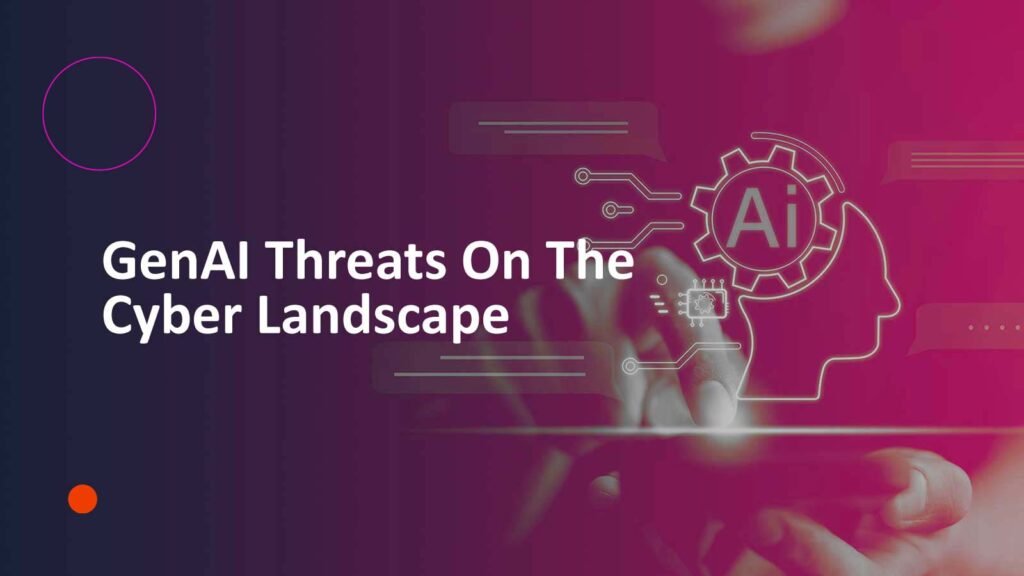47% of executives are concerned about GenAI threats that will lead to new kinds of attacks targeting their own AI models, data, or services.
Generative AI is one of the latest upheavals in technology to break the barriers of revolutionizing industries. The general public sentiment revolves around the broader impact and implications of AI – jobs, the spread of misinformation, etc, but world leaders and researchers now focus on more pressing concerns. The speed of AI is especially concerning to the government as it shows signs of taking over in a dystopian future. leaves experts off the hook, by certain malicious outcomes of AI.
What is so concerning about GenAI?
Influencers and marketers have found GenAI marvelous for their profit-making endeavors – making the best out of this technology. But threat actors are using this superhuman facility of AI to decode encryptions and find out password combinations in mere seconds. This has opened up doors of significant security risks.
Social Engineering
You must have already seen those AI-generated videos that appear convincingly real, Images that seem surreal, and the possibilities that it create are endless. Many tools even work for free. Such tools can be greatly misused to create fake credentials, documents, and even speech – to gain entry into a confidential system.
Physical attacks
IIoT solutions connecting to a large number of physical systems have currently taken prominence in digitally transformed organizations. The government has been warned of infiltration attempts using these IIoT models integrated with Gen AI. When performed in a controlled environment, these attacks have shown results like damage to physical equipment, malfunctioning, and even explosions.
Data breaches
Recent reports have suggested that 55% of data loss protection events involve users who feed personal data into AI tools to generate results. We should know that hackers are able to mimic and develop their own AI tools to lure users into inputting their personal information. These tools can then be used to carry out brute-force attacks on cybersecurity protections.
Theft of technology
One of the pressing issues of Gen AI models is that they can someday act against their creators – reminding them of the Terminator. They can eventually grow to become self-reliant and make their own decisions. If threat actors gain control over these AI tools, they can turn it into an even deadly destructive device or a security threat.
How to put up against these GenAI threats
Cyber threats have become commonplace and major industries have redirected their attention to defensive installations and strategies. The CIOs and CISOs must review existing cybersecurity solutions with AI-infused processes in mind to reliably protect sensitive systems from sophisticated threats.
As organizations come to terms with the reality that generative AI threats will likely affect operations for years to come, leaders and security teams must leverage this technology to their advantage. According to a McKinsey article, 53% of organizations recognize the link between generative AI and cybersecurity risks, yet only 38% are actively working to mitigate these threats.
This raises a critical question: Can GenAI threats be overcome by using it as a defensive tool?
Threat Detection and Response
Organizations can use the GenAI tools to continuously process information and adapt to changes according to the threat to protect core systems from organized attacks. To this effect, operational settings could be changed in real-time systemically to effectively respond to such evolving threats.
Using generative AI to track the network’s activities at all times means that organizations would not let any kind of unusual behavior pass unhandled. This would contain and neutralize attacks before they are propelled. This is particularly vital for organizations that seek to create a convergence of physical and cybersecurity. This contains the threat before cybercriminals get into the systems controlling physical security or IIoT installations.
Vulnerability Patch Generation
Quite often, adversaries utilizing generative AI tools make use of vulnerabilities that lie within the internal systems of any organization. Generative AI tools owned by an organization can be utilized to generate or implement virtual patches for newly identified vulnerabilities. The AI-driven systems can draw on both internal and external datasets to autonomously test the deployment of such patches within test environments that emulate fixes without interrupting critical operations, compromising physical systems, or causing unwarranted downtime.
Improved Credential Security
Generative AI can also be used to enhance credential security. Organizations can make use of AI to generate biometric data, such as facial identification patterns and fingerprints, for their systems to know how to identify the manufactured credentials. It can be expanded further to involve text-based methods where leaders will be able to educate employees on how to recognize AI-generated social engineering attacks, thus offering further fortification of the organization’s security posturing.
Conclusion
With the increasing sophistication of cyber-attacks, GenAI threats to digital and physical security systems will keep on growing. 96% of global organizations have described cyber-attacks as a threat to physical security solutions; the need for proactive measures can no longer be optional. Effective mitigation of the cyber-physical threat landscape would involve using generative AI to the advantage of leaders and security teams. The continuous monitoring, fast response, and proactive defense enabled by generative AI would help secure an organization’s most critical assets against even the most well-planned attacks.


